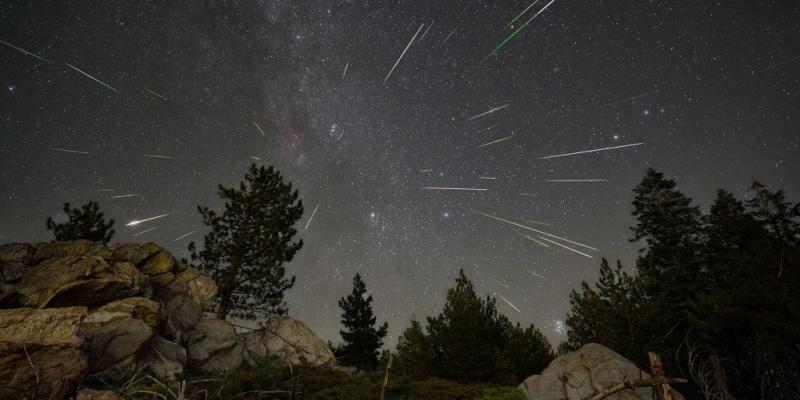Annual Lyrid meteor shower peaks overnight Monday



By Denise Chow
It's spring skywatching at its best: The annual Lyrid meteor shower is back, offering people across the Northern Hemisphere a chance to catch shooting stars in the night sky.
The meteor shower began on April 16, but will reach its peak Monday night and into the early-morning hours of Tuesday. Weather permitting, skywatchers could see up to 15 shooting stars per hour during that period, as long as they're in a dark location.
The Lyrids are typically one of the year's most reliable meteor showers, and their timing coincides with more temperate spring temperatures across the Northern Hemisphere, making them a popular celestial show.
This year's peak occurs with a waning crescent moon that will be about 27% full, according to NASA, which means the shooting stars are less likely to be washed out by bright moonlight.
In order to best enjoy the peak, NASA recommends watching outside from Monday night anytime after 10 p.m. local time until dawn the next morning, with a sweet spot at roughly 5 a.m. local time on Tuesday. But anytime late in the evening on Monday and before the moon rises overnight at around 3:30 a.m. local time should offer good chances to see meteors streaking across the night sky.
The Lyrids are usually observed most clearly from the Northern Hemisphere, but eagle-eyed skywatchers in the Southern Hemisphere may be able to spot some shooting stars, according to NASA.
If conditions are clear, it's best to pick an unobstructed viewing location under the darkest possible skies, away from city lights and other forms of light pollution.
Skywatchers should face roughly toward the east and look straight ahead. Meteors can streak from any point and the Lyrids are known to occasionally leave bright trails as they dart across the night sky.
Meteor showers can be enjoyed without any special equipment, but experts suggest giving your eyes time to adjust to the dark, spending about 45 minutes without looking at cellphones or any bright points of light.
Meteor showers occur when Earth passes through bits of debris left over from comets or asteroids. As our planet orbits the sun and swings through these clouds of rocks and dust, the pieces vaporize in the atmosphere and appear as streaks of light in the sky.
The Lyrids are caused by debris from a comet known as C/1861 G1, or Comet Thatcher, named for the amateur astronomer Alfred E. Thatcher, who first observed the comet in 1861.
After its peak, the Lyrid meteor shower will continue to be on display until April 29.



